19 native species and 3 introduced/naturalized
Turtles are the reptiles that carry their house around on their backs. In softshelled turtles, the shell is made of cartilage. In hard-shelled turtles, it is a bony extension from the ribs. We use the shape of the carapace (top shell) and the plastron (bottom shell) as one characteristic to distinguish species. The carapace can be flattened or domed, keeled or unkeeled, flared or rounded. The scales, or scutes, may be smooth or inscribed and rough. The margins may be notched, serrated, or entire (smooth). The plastron may have one hinge, or two, which allows the turtle to close up. Or it may have no hinges. Of course, colors on the shell as well as on the head, neck and legs are important. We can sometimes use the color of the eyes to distinguish males from females.
| Turtle Family | Number of Species & Subspecies in Maryland |
|---|
| Box and Water Turtles (Emydidae) | 12 |
| Musk and Mud Turtles (Kinosternidae) | 3 |
| Snapping Turtles (Chelydridae) | 1 |
| Softshell Turtles (Trionychidae) | 1 |
| Sea Turtles | 5 |
Box and Water Turtles (Emydidae)
The largest family of turtles worldwide, the Emydidae family, is represented in Maryland by thirteen species of turtle. With such diversity comes a variety of body types and habitat choices. Usually, the carapace is not highly domed, but there are a few species with high arches to their shells. Many species have a plastron that hinges, allowing for complete or partial closure. Several are almost completely aquatic while others are primarily terrestrial. The name Emydidae comes from the Greek "emys", meaning "freshwater terrapin", but some of our turtles will also use brackish water.

|
Spotted Turtle (Clemmys guttata)
Photo courtesy of Tony Prochaska
|
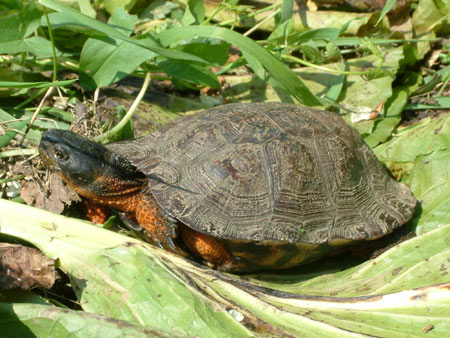
| Wood Turtle (Glyptemys insculpta)
Photo courtesy of Linh Phu
|
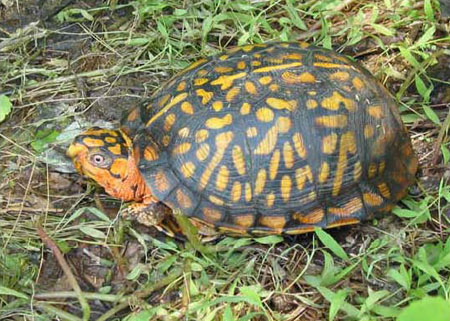
| Eastern Box Turtle (Terrapene carolina)
Photo courtesy of Scott A. Smith
|
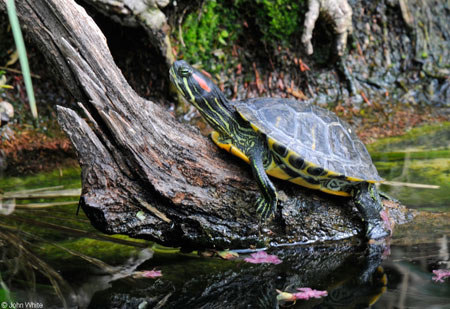
| Introduced Photo courtesy of John White
|
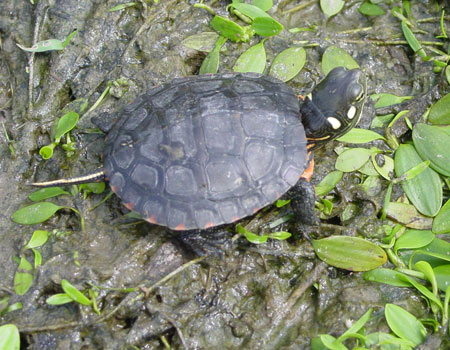
|
Eastern Painted Turtle (Chrysemys p. picta)
Photo courtesy of Corey Wickliffe
|
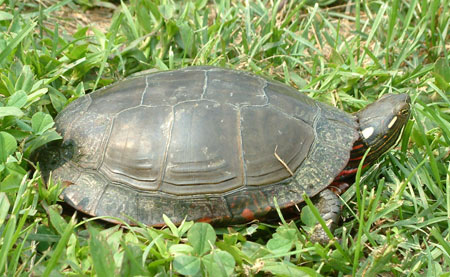
|
Photo courtesy of Linh Phu |
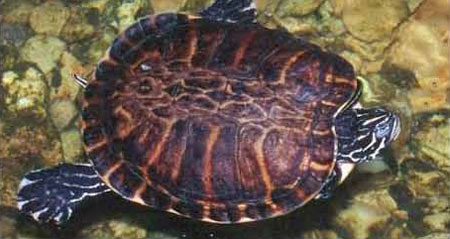
|
Introduced; not established in Maryland yet
Photo courtesy of John White
Former Name: Eastern River Cooter
|

| Photo courtesy of John White
|
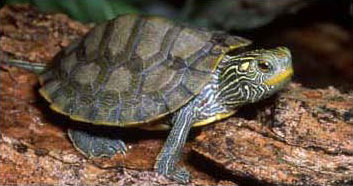
| Endangered Photo courtesy of Jim Harding
|
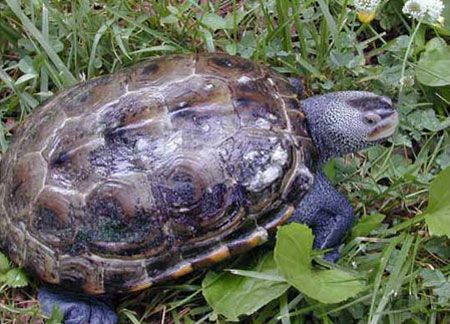 | Photo courtesy of Lori Erb Former Name: Northern Diamond-backed Terrapin
|
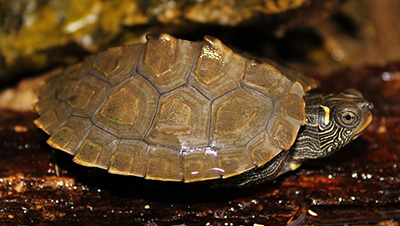
| Introduced Photo courtesy of by Peter Paplanus CC by 2.0
|
Musk and Mud Turtles (Kinosternidae)
As the name implies, some of these turtles will release a strong scent when disturbed. They have paired glands on either side of the body, just inside where the bridge connects the carapace and plastron. Although they may bask, our two Kinosternids are primarily aquatic. A good way to tell the difference between mud and musk turtles is by looking at the plastron. In eastern mud turtles (Kinosternon subrubrum), the plastron is relatively large with
2 hinges. Our eastern musk turtle (Sternotherus odoratus), formerly called the stinkpot, has a much reduced plastron with only 1 hinge.
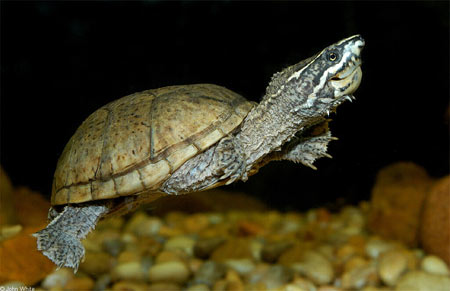
|
Photo courtesy of John White
|
Snapping Turtles (Chelydridae)
Currently, in the world there are only two living members, or genera, of the Chelydridae family, our own snapping turtle (Chelydra serpentina) and the alligator snapping turtle, which is not found in Maryland. There are also seven extinct genera of this family.
As the name suggests, this turtle is known for its surly disposition when threatened. Their very long necks allow them to reach farther than other turtles to snap at predators coming from behind.
Never pick up a turtle by its tail; this can damage the animal's spine.
Softshell Turtles (Trionychidae)
The bony scutes found in hardshell turtles are missing in these softshelled cousins. The carapace is leathery while the plastron is much reduced. Our one species, the eastern spiny softshell is primarily aquatic. Their long tubular snouts act like snorkels, allowing the animals to remain submerged but still breathe.
Sea Turtles (Cheloniidae and Dermochelyidae)
These turtles are fully aquatic, emerging from the waters only to breed and lay eggs. In addition to huge lungs, they can also do without oxygen from the air as they submerge for up to 30 minutes. Most have hard shells; the leatherback (our only member of the Dermochelyidae Family) lacks a bony carapace and instead has skin embedded with little bony deposits over it back.
All species of sea turtles are listed as Threatened or Endangered.
Endangered Photo courtesy of the National Park Service |
Threatened Photo courtesy of iStock
|
Endangered
Photo courtesy of Scott R. Benson, NMFS Southwest Fisheries Science Center
|
Former Name: Atlantic Hawksbill Sea Turtle Endangered Photo courtesy of iStock
|